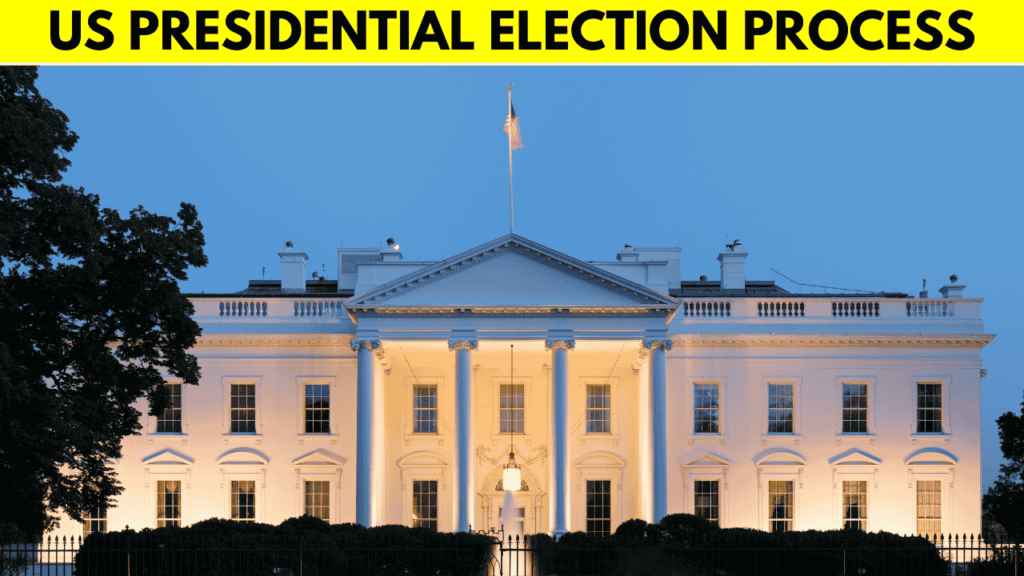US President Election Process 2024: As the 2024 U.S. presidential election date nears, the competition between Democratic nominee Kamala Harris and Republican counterpart Donald Trump intensifies. Though Americans are set to vote on November 5, the journey to this election has spanned months, involving a complex process. Here’s a detailed look at the US President election process, from early campaigning to Inauguration Day.

Early Preparations: Launching Campaigns
One year before Election Day, candidates from the Democratic and Republican parties begin their campaigns. During this initial phase, they assemble teams, organize fundraising efforts, and travel nationwide to build support. The groundwork laid here is crucial for visibility and establishing key voter bases.
Campaign Kick-Off and Debates
As campaigns ramp up, candidates participate in televised debates. These debates provide a platform to outline their policies, address current issues, and counter their opponents’ positions. Engaging in these debates helps candidates gain momentum and refine their message as they advance through the election process.
Understanding the US Presidential Election Process
The US presidential election process involves several key components, each serving a specific role in nominating, selecting, and electing a president. Terms like ‘Electoral College,’ ‘National Conventions,’ ‘Primaries,’ and ‘Caucuses’ are essential to understanding how the election system functions. Here’s a breakdown:
Primaries and Caucuses: Choosing Party Nominees
- Primaries: In primaries, party members vote by secret ballot for their preferred candidate, similar to a general election. These votes determine how many delegates each candidate will have at the national conventions.
- Caucuses: Caucuses involve party members gathering in local meetings to discuss and vote publicly for their preferred candidate. The results influence delegate allocation for the conventions.
National Conventions: Official Nomination of Candidates
National conventions mark a pivotal moment in the US President election process. At these conventions, delegates from each party officially endorse their chosen presidential nominee. The candidate also announces their Vice Presidential running mate, setting the final lineup for the general election.
The Role of the Electoral College in the US Presidential Election
The Electoral College is the system through which the president is ultimately elected. Each state is allocated a specific number of electors based on its representation in Congress, totaling 538 electors nationwide. After the general election, electors cast their votes, with 270 electoral votes needed for a candidate to win.
The Timeline of the US Presidential Election Process
The US presidential election process follows a structured timeline, ensuring each phase contributes to selecting the next president. Here’s a month-by-month breakdown:
- Spring (Year Before Election): Candidates announce their campaigns and register with the Federal Election Commission (FEC).
- Summer (Year Before Election) to Spring (Election Year): Primary and caucus debates take place, with candidates competing in televised discussions on key issues.
- January to June (Election Year): States hold primaries and caucuses, allowing voters to express their preferences.
- July to Early September: Parties host national conventions to formally nominate their candidates and introduce Vice Presidential nominees.
- September and October: Candidates engage in presidential debates, presenting their platforms and persuading undecided voters.
- Early November: Voters cast their ballots on the first Tuesday of November in the general election.
- December: The Electoral College meets, and electors cast their votes for the president.
- Early January (Following Year): Congress counts the electoral votes, confirming the results.
- January 20: The newly elected president is sworn in on Inauguration Day.
Key Takeaways on the US Presidential Election Process
The US President election process involves a year-long journey that combines campaigning, debates, party conventions, and the Electoral College. Each stage builds momentum toward November’s vote, culminating with the official certification in Congress and the president’s inauguration.
Understanding this process not only clarifies how the US elects its leaders but also provides insight into the democratic foundations that shape American governance.
Follow Us for More Insight on American Leadership and Global Impact
Stay updated with the latest in American politics, leadership, and educational content, covering everything from elections and policy shifts to historical analysis.

